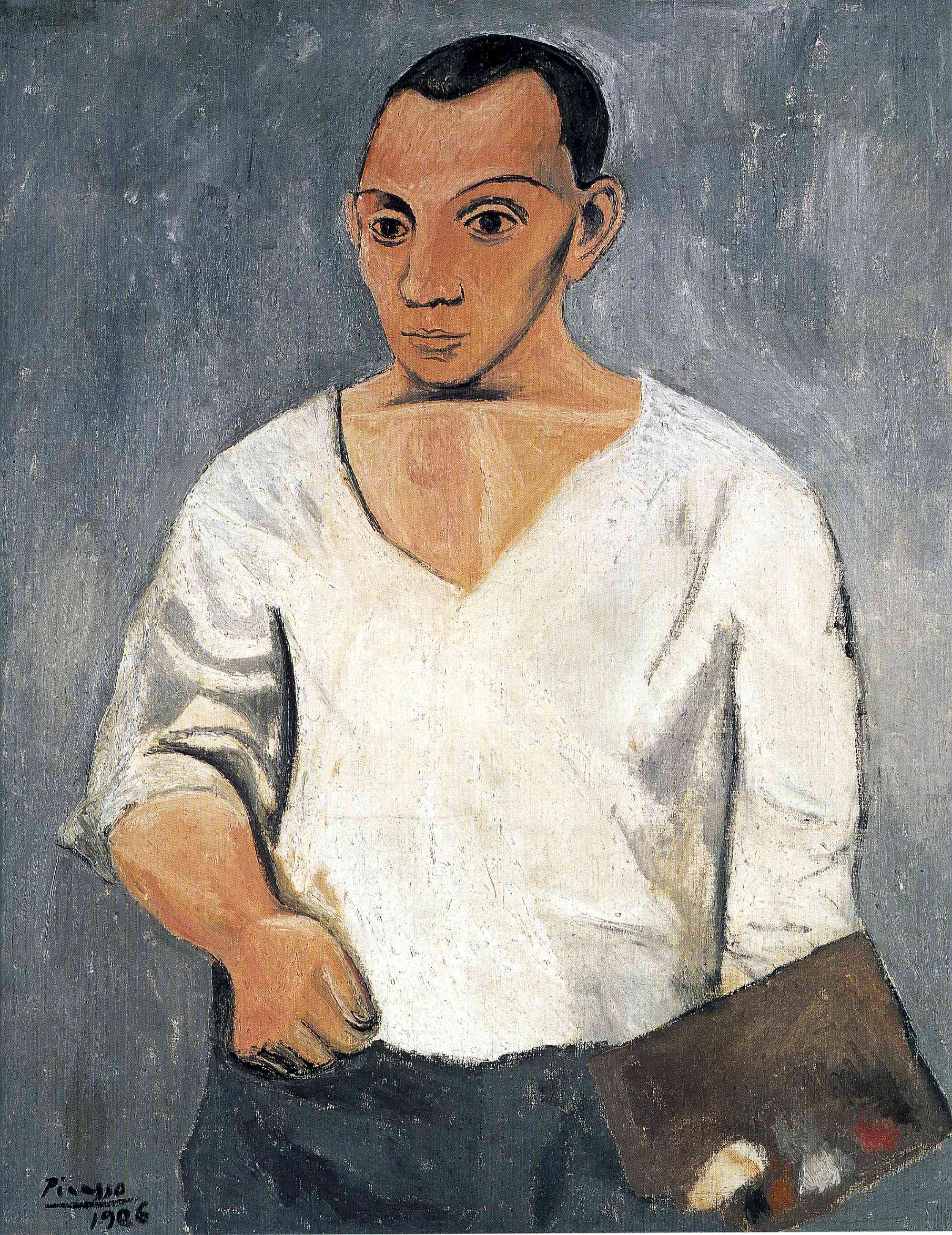art-Picasso.com
Pablo Picasso 1881-1973
©Pablo Picasso - Self-Portrait 1906
 Self-Portrait |
Masterpieces from the Philadelphia Museum of Art: Impressionism and Modern Art:
This portrait is the triumphant manifesto of a twenty-five-year-old artist who, after several years of struggling to channel his innate virtuosity, emerged resoundingly with a unique artistic vision. It is Picasso's first important self-portrait since 1901. In the intervening years, he had appeared in the guise of hungry beggars or circus performers--metaphorical representations of the impoverished, outcast artist. Here Picasso emerges as a proud and determined painter, the palette the only clue to the profession of the tough, athletic figure represented. The artist's power is concentrated in his right arm, with its clenched fist, a massive form that overwhelms the rest of the simply rendered body. The muscular vitality of this arm acts in counterpoint to the stern expression of the face, whose exaggerated eyelids and brows, oval face, and oversized ear give it the aspect of a mask, separated from the body by the pronounced line of the collarbone. In this painting, which reflects the stylistic influences of Picasso's recent encounters with African art and archaic Iberian sculpture, the artist appears as a painter without a brush. Picasso thus confidently and presciently ascribes to himself the "magic" he would continue to discover in pre-modern and non-Western artistic traditions.
Michael R. Taylor, from Masterpieces from the Philadelphia Museum of Art: Impressionism and Modern Art (2007), p. 114.